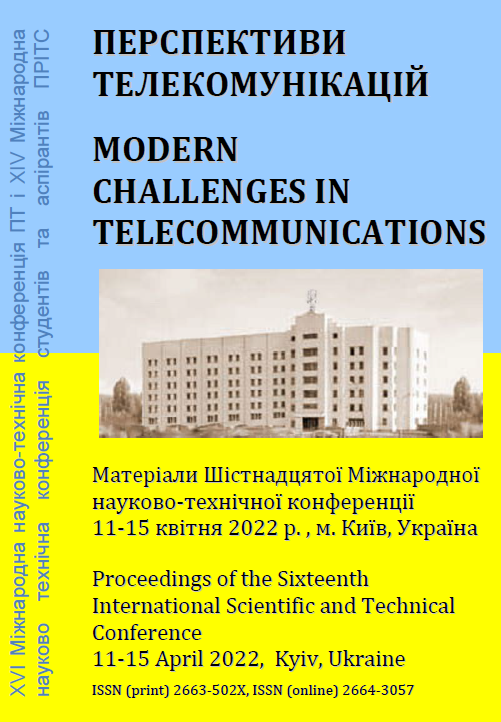ПОЛЮСИ ЗАГАСАННЯ В МІКРОХВИЛЬОВИХ ТРИРЕЗОНАТОРНИХ СМУГОВИХ ФІЛЬТРАХ
Ключові слова:
полюс загасання, мікрохвильовий резонатор, решітка 4-полюсна, добротністьАнотація
У доповіді розглянуто трирезонаторні мікрохвильові фільтри з полюсами згасання. Досліджено різні механізми формування полюсів загасання, запропоновано моделі таких фільтрів на базі мостових чотириполюсників. Аналіз проведено з використанням універсальних фізичних понять – власних, навантажених та зовнішніх добротностей резонаторів та їх взаємних розстроек.Посилання
Levy R, Cohn, S. B. A History of Microwave Filter Research. IEEE Transactions on Microwave Theory and Techniques, 1984, p 1055–1067.
A.V. Zakharov, M.E. Ilchenko, Mixed bonds in microstrip band pass filters. Radio engineering and electronics № 6, 2018, p. 607–618.
J.S. Hong, M.J. Lancaster, Microstrip cross-coupled trisection bandpass filters with asymmetric frequency characteristics, IEE Proc.- Microw. Antennas Propag, vol. 146, no. 1, p. 84–90, 1999.
R. Levy, New cascaded trisections with resonant cross, MTT-S Int. Microwave, vol. 2, p. 447–450, 2004.
M.E. Ilchenko, A. P. Zhivkov. Bridge Equivalent Circuits for Microwave Filters and Fano Resonance, Advances in Communication Technologies. Springer, 2019, p. 278-298.
Warren P. Mason Electromechanical Transducers. Van Nostrand Company, Inc., 1942.
Guillemin, E.A. Synthesis of Passive Networks: Theory and Methods Appropriate to the Realization and Approximation Problems. Wiley, Hoboken, 1957.
Dr. Jia--Sheng HongSheng Hong / Department of Electrical, Electronic and Computer EngineeringDepartment of Electrical, Electronic and Computer Engineering / HeriotHeriot--Watt University, UKWatt University, http://f1chf.free.fr/hyper/Design%20de%20filtre.pdf.
David M. Pozar. Microwave Engineering. Wiley, 2011, P. 752.
##submission.downloads##
Опубліковано
Як цитувати
Номер
Розділ
Ліцензія

Ця робота ліцензується відповідно до Creative Commons Attribution 4.0 International License.
Authors who submit to this conference agree to the following terms:a) Authors retain copyright over their work, while allowing the conference to place this unpublished work under a Creative Commons Attribution License, which allows others to freely access, use, and share the work, with an acknowledgement of the work's authorship and its initial presentation at this conference.
b) Authors are able to waive the terms of the CC license and enter into separate, additional contractual arrangements for the non-exclusive distribution and subsequent publication of this work (e.g., publish a revised version in a journal, post it to an institutional repository or publish it in a book), with an acknowledgement of its initial presentation at this conference.
c) In addition, authors are encouraged to post and share their work online (e.g., in institutional repositories or on their website) at any point before and after the conference.

